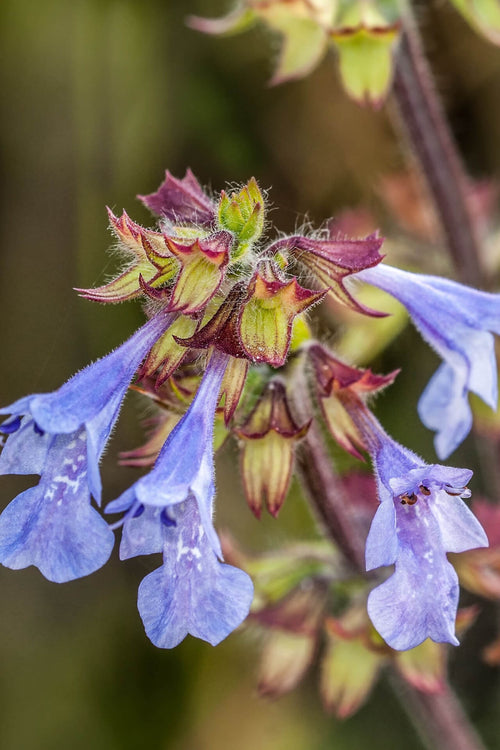Lyreleaf Sage
Lyreleaf Sage is a perennial wildflower characterized by its delicate, lyre-shaped leaves and spikes of tubular, purple to blue flowers, often found in dry, open woodlands and meadows. It presents a range of benefits when thoughtfully integrated into landscaping designs. Its distinctive appearance, adaptability, contributions to biodiversity, and potential for enhancing outdoor spaces' visual and ecological aspects make it a valuable addition to gardens and landscapes.
Lyreleaf Sage
Lyreleaf sage, which is also known as Salvia lyrata, is an herbaceous perennial, meaning that it has stems that usually do not consist of any woodsy parts and that produce flowers on an annual basis before losing them every winter, and it usually lives for more than two years.
Also, being described as "sage" means that it is a hardy, strong plant that can withstand being walked on much more so than is the case for many other types of greenery. It is also known for its ability to withstand, especially wet or dry conditions. This plant is the only one with this specific description that is native to North America.
It should not be confused with the nightshade, an East Asian flowering plant.
Leaves Of The Lyreleaf Sage
A rosette of leaves is grown by this hairy perennial at its base, and those leaves, which have irregular margins, can extend up to 8 inches. Its stem usually reaches 1-2 feet in length and leaves normally grow higher as well, although those located there are much simpler.
Its leaves are dark green for much of the year, usually changing to dark purple in the winter.
Flowers Of Lyreleaf Sage
Flowering tends to happen more extensively in April, May, and June, although it can occur sporadically throughout the year, with fall commonly being another significant time for it. These blue or violet flowers tend to reach an inch in length and attract butterflies and hummingbirds, while bees serve as their predominant pollinators.
This plant can transition from being a seed to flowering in just a few months.
Locations Of Lyreleaf Sage
The natural settings for most of these flowering plants include open areas and along forest edges. It is also commonly found in clearings, meadows, and sand. Many use it in gardens and lawns.
Its native area is spread throughout much of the eastern half of the United States, specifically from Connecticut south to Florida and west to Illinois, Missouri, Kansas, Oklahoma, and Texas.
"Be Well"
"Salvia" is derived from "salvo," a Latin word that means "be well," and this herbaceous perennial has been used by some over the years to ease various ailments.



















































